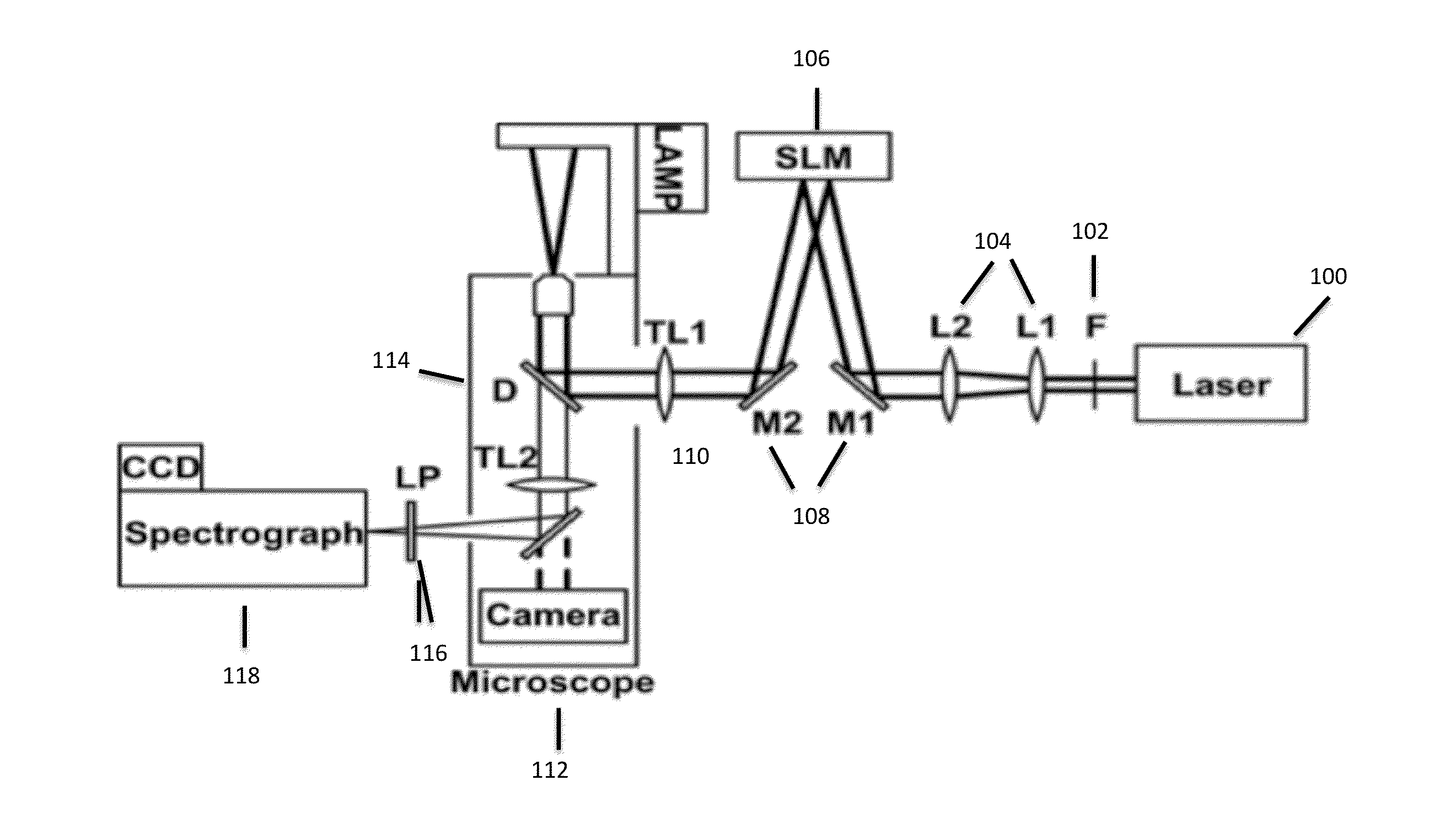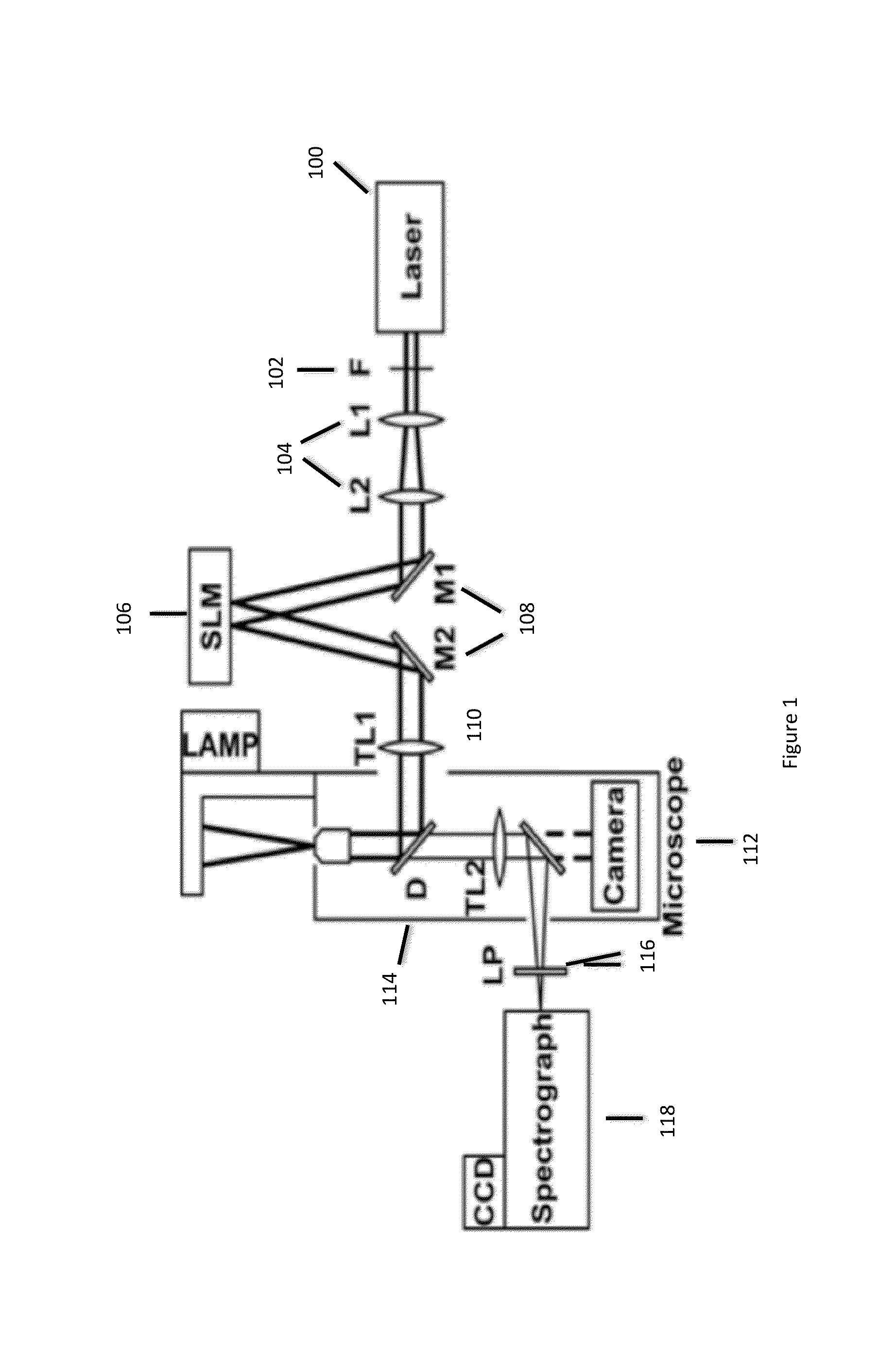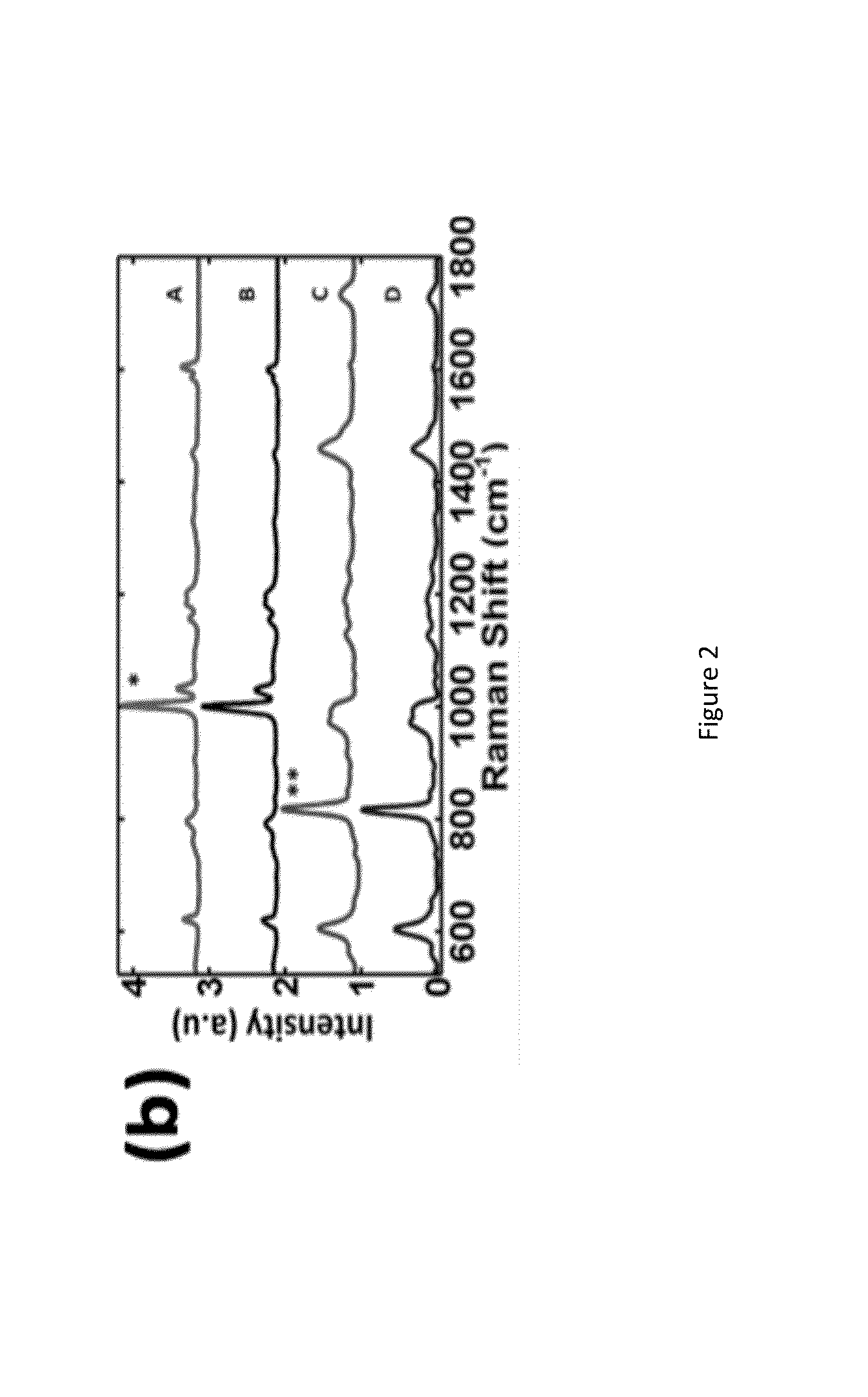Method and system for active-illumination parallel raman microspectroscopy
- Summary
- Abstract
- Description
- Claims
- Application Information
AI Technical Summary
Benefits of technology
Problems solved by technology
Method used
Image
Examples
example 1
[0029]The system configuration is shown in FIG. 1. The 785 nm output of a CW Titanium:Sapphire laser (Spectra-Physics 3900S) was filtered by a laser-line filter (Semrock LL01-785-12.5) and expanded to ˜1 cm in diameter before the spatial light modulator (SLM, LCOS Hamamatsu). The output from the SLM was fed through the back port of an inverted microscope (Olympus IX71) with an addition of a tube lens. A dichroic mirror (Semrock LPD01-785RU-25) was placed in the microscope turret for epi-Raman acquisition via a microscope objective (Olympus UPLSAPO 60XW, 1.2 NA). The Raman light was redirected out via the microscope side port, filtered by a long-wave pass filter (Semrock LP02-785RS-25), and sent into a spectrograph (Acton 300i) with a thermal-electrically cooled CCD camera (Princeton 400BR-excelon). Developed code was used to program the SLM to generate illumination patterns. The CCD data acquisition and the SLM pattern generation were synchronized by Labview (National Instrument).
[0...
PUM
 Login to View More
Login to View More Abstract
Description
Claims
Application Information
 Login to View More
Login to View More - R&D
- Intellectual Property
- Life Sciences
- Materials
- Tech Scout
- Unparalleled Data Quality
- Higher Quality Content
- 60% Fewer Hallucinations
Browse by: Latest US Patents, China's latest patents, Technical Efficacy Thesaurus, Application Domain, Technology Topic, Popular Technical Reports.
© 2025 PatSnap. All rights reserved.Legal|Privacy policy|Modern Slavery Act Transparency Statement|Sitemap|About US| Contact US: help@patsnap.com



